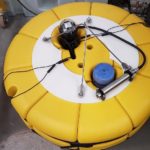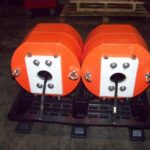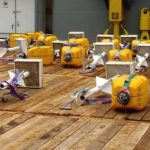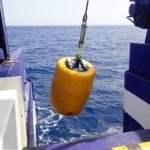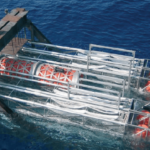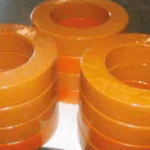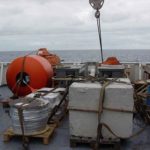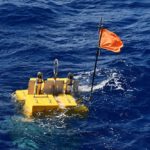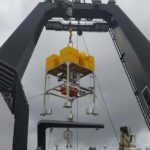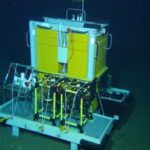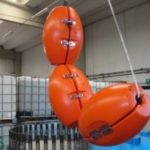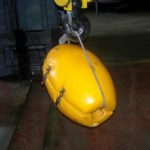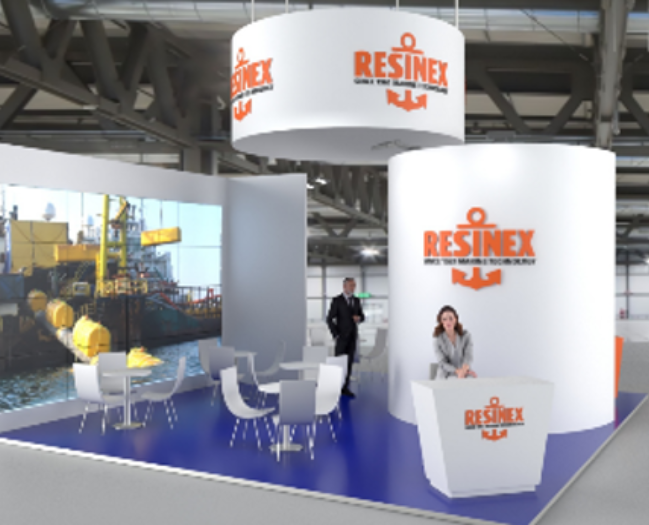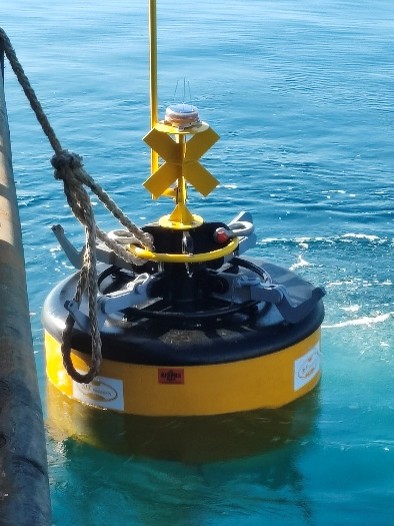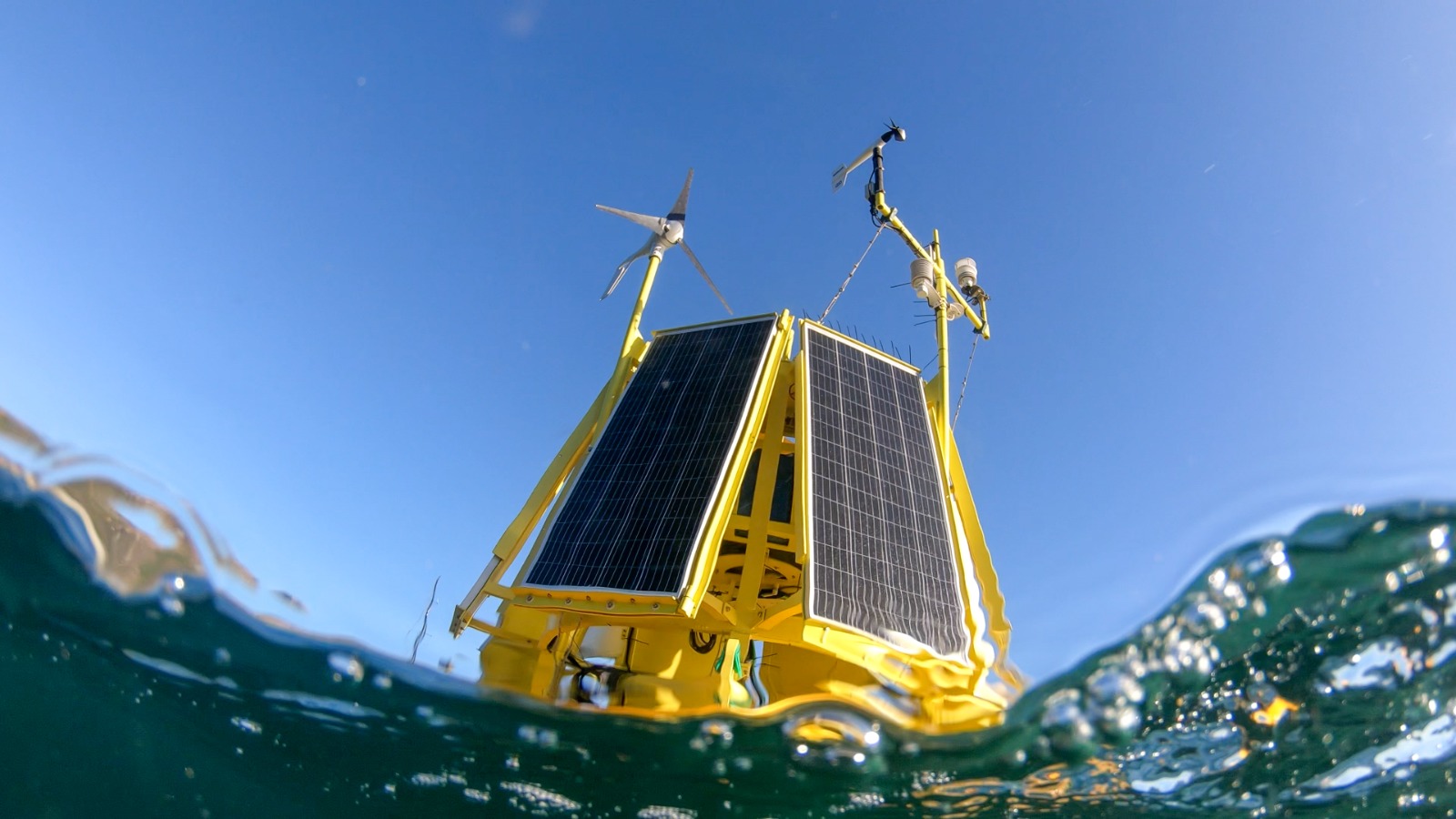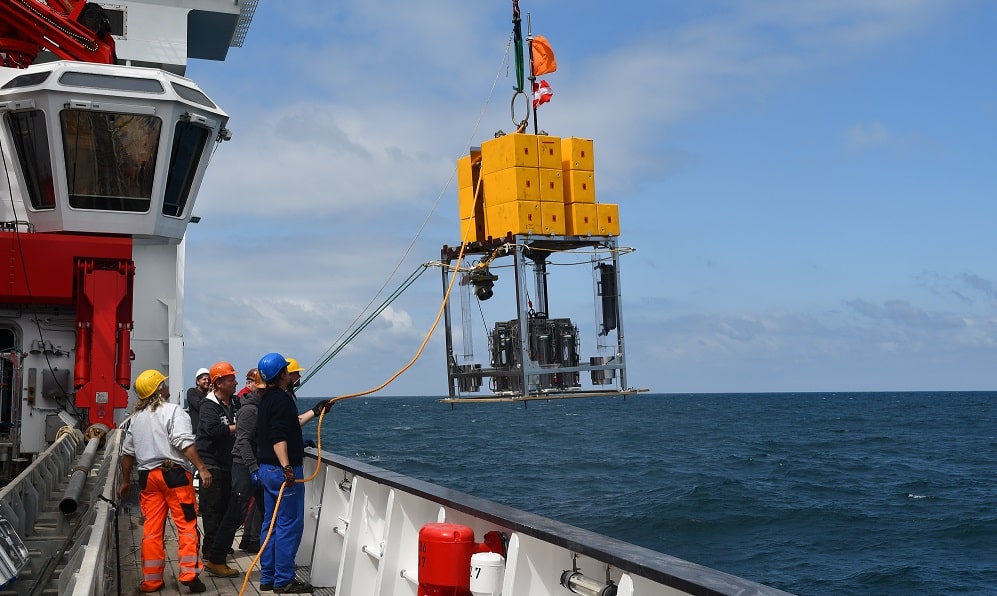
The specific composition of the Resinex syntactic foam allows for underwater use up to 11,000 meters of depth thanks to the high resistance of the material.
High resistance up to 11.000 metres of depth
Resinex started manufacturing syntactic foam buoys in the early 1990s: after years of research and experimentations, it succeeded in creating the perfect compound suitable for floats that have to reach the deepest areas of the oceans.
The specific composition of Resinex syntactic foam allows the underwater use up to 11.000 metres of depth, where a high resistance to pressure and to different external factors are necessary: even the deepest point of the ocean is within our reach. The key points are a very high strength of the material and a zero water absorption rate.
The excellent performance of Resinex syntactic foam modules is always confirmed by the routine quality tests carried out at Resinex Marine Research Centre in Adro (Brescia).
The quality tests are essential, as Resinex always looks for improvement and product refinement.
Another company’s key point is the excellent versatility: Resinex can customize the syntactic floats according to the specific application and the depth of positioning.
Syntactic foam buoys are mainly requested in Oceanography and also in the Oil&Gas Industry.
In O&G, Resinex floats are used for anchoring, medium and long-term positioning of submarine structures and pipeline installation at different depths.
After the first medium-small projects in the 1990s and early 2000s, Resinex acquired the necessary experience to deal with the major projects all over the world.
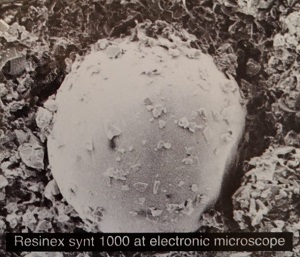
Resinex’s Oceanography: an overview
Resinex supplies syntactic floats for Oceanography, both for business activities and scientific studies, where floats’ application depth can be up to 11.000 metres. Projects are usually related to sea and environmental monitoring, tsunami warning and seabed studies.
The British company Sonardyne, the world market leader in underwater positioning, has been cooperating with Resinex for more than 20 years, asking for high performance floatation collars for its range of subsea acoustic transponders.
Through the years, iXBlue often required float collars and spherical buoys too, for the deployment of acoustic releases.
Resinex supplied PLOCAN with syntactic foam floats for the ESTOC station in the Canary Islands, a point of study and monitoring of oceanic activity.
Over time, also Güralp has often required special syntactic floats for a wide range of projects related to studies on earthquake/tsunami warning and ocean monitoring.
- Guralp
- iXBlue
- Sonardyne
- ESTOC Station
Among the most important Italian customers in the scientific field we can mention the National Institute for Nuclear Physics (INFN), that carried out a study on high energy neutrinos by placing a submarine telescope on the seabed in the Mediterranean Sea (NEMO Project), and the National Institute of Geophysics and Volcanology (INGV), that required different special floats for the enhancement of multidisciplinary marine research infrastructures in Southern Italy (EMSO MedIT Project).
The cooperation with universities has always been really frequent. Deep water buoys were delivered to the University of Azores, ordered by the Department of Oceanography and Fisheries: they were positioned off Ponta Delgada in the island of San Miguel as a support for the study of ocean currents and fish movements in the area.
The University of Naples “Parthenope”, in Southern Italy, requested deep water buoys too.
Another recent noteworthy project is certainly the one carried out for the study of deep-sea ecosystems by the University of Southern Denmark (HADES Project) in the Mariana, Kermadec and Atacama trenches at a depth of 11.000 metres.
- Nemo Project
- EMSO MedIT Project
- University of Azores
- Hades Project
A similar project has been held by the National Institute of Water and Atmospheric Research – NIWA (New Zealand), that required syntactic modules to perform an experiment on the resilience of deep-sea benthic communities to the effects of sedimentation.
Through the years, also German scientists have often chosen Resinex’s quality: the German institute Geomar required syntactic foam modules and floats for the SO242-2 Expedition in South America, in order to guarantee buoyancy for two elevators used to transport ROV-modules, sampling and experimental gears to the seafloor and back to the surface.
The Leibniz Institute, one of the most prestigious European research institute, asked for various Resinex syntactic foam blocks for innovative experiments in ultra deepwater.
Other German relevant clients are the Alfred Wegener Institut of Bremerhaven and the Max Planck Institute of Bremen.
As for Asia, one of the most relevant Resinex’s client is the Indian National Institute of Ocean Technology – NIOT, that over the years has required hundreds of umbilical cable floats, cable risers and support buoys for various deepwater projects.
A dozen cable floats were also manufactured for LOCEAN, the Laboratoire d’Oceanographie et du Climat based in Paris.
- NIWA
- Expedition SO242-2
- NIOT
- LOCEAN
Resinex is proud of having participated in some of the most important oceanographic projects all around the world, consolidating year after year the partnership with a wide variety of companies, institutes and universities.

